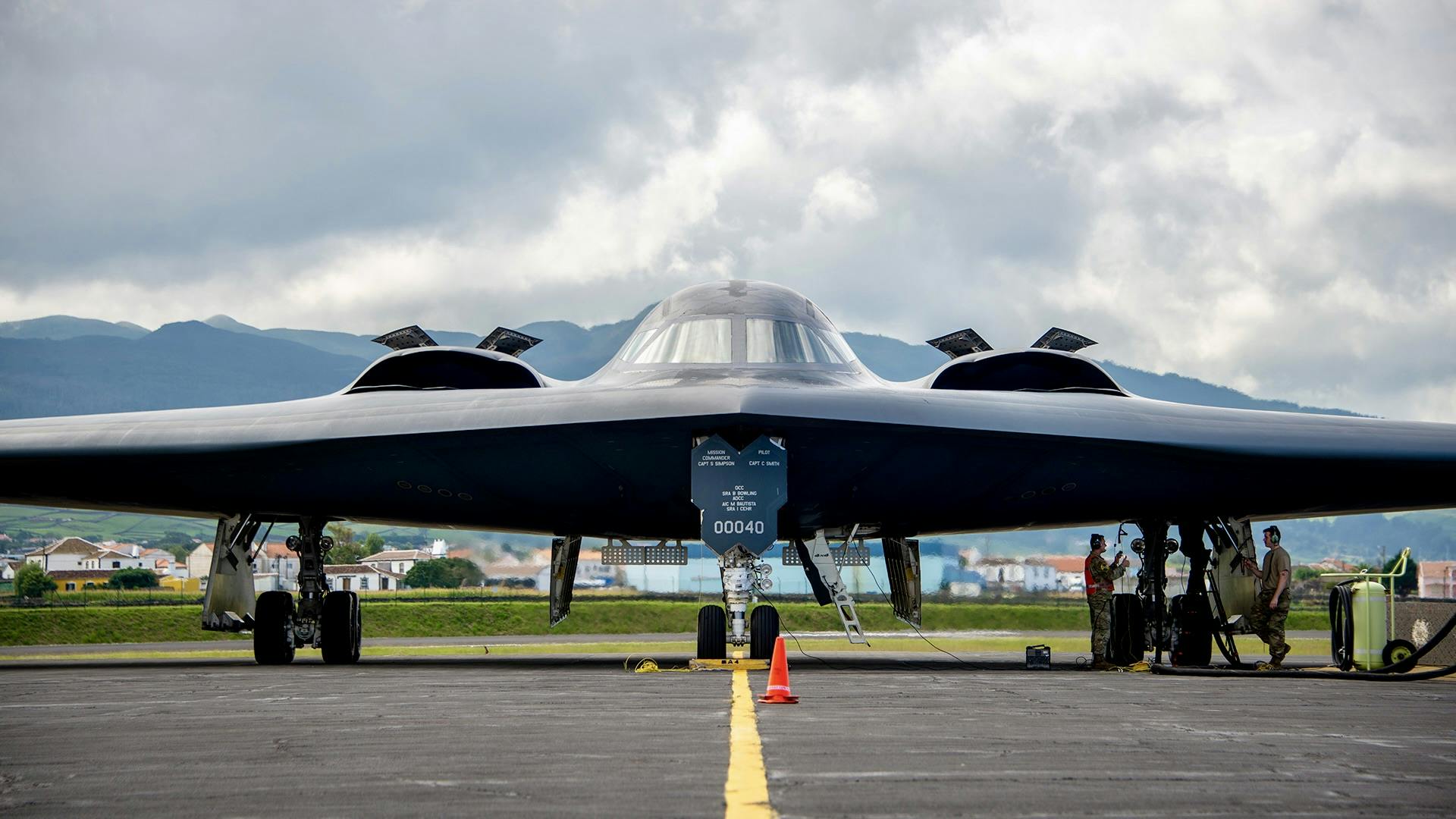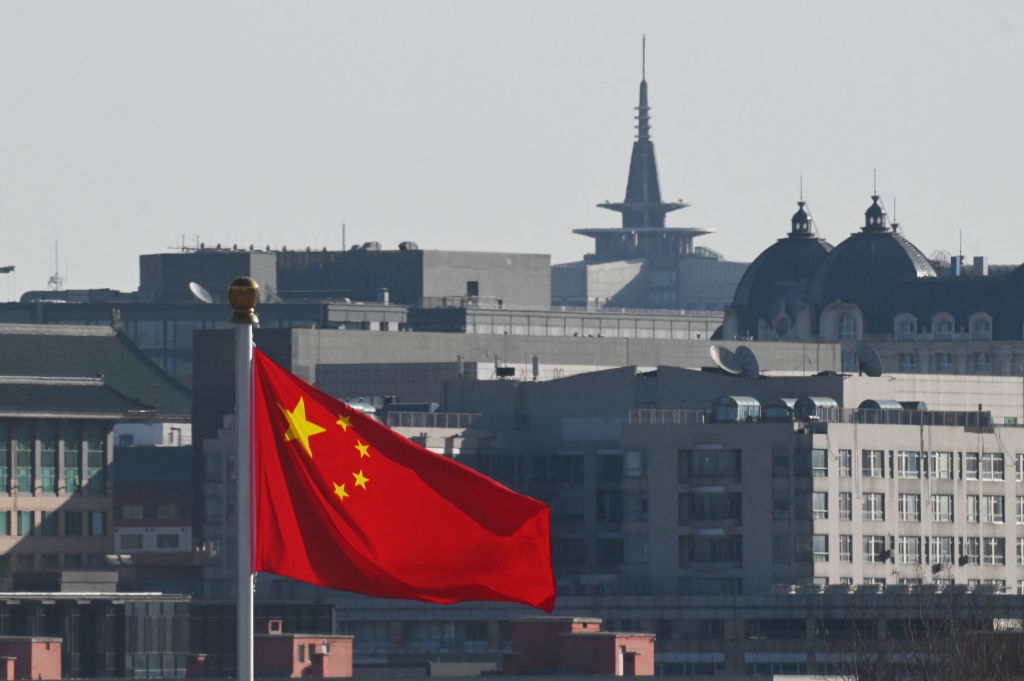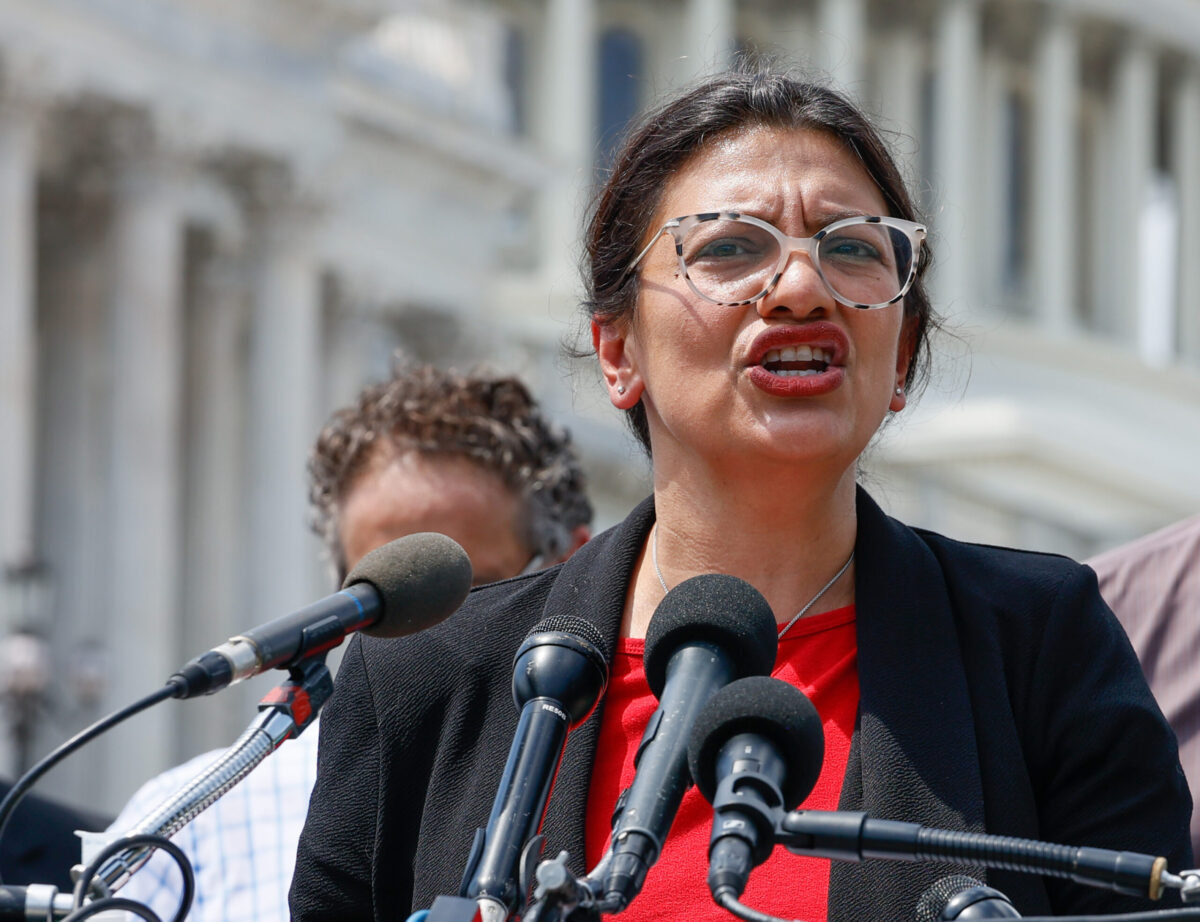Peace to prosperity is America First in the Middle East



A Fortuitous Confluence of Events
Donald Trump’s foreign policy team is shaping up to be great news for Israel, the West, and the proper definition of America First. The erosion of American interests under the Biden Administration means that Trump will return to office looking at a world very different from the one he handed over. Israel is but one of many countries to find itself in a radically changed geopolitical position.
On October 7, 2023, Iran chose to heat up its long-simmering cold war with Israel, initially by proxy but eventually directly. Throughout that entire period, the Biden Administration has preached restraint. Its stated concerns for humanitarian aid and the avoidance of a wider war have hamstrung Israeli military action, prolonged suffering, leaked valuable intelligence, and explicitly protected Iranian nuclear facilities. By all indications, the incoming Trump Administration will take a very different approach.
Biden’s misplaced prioritization stems from a longstanding bipartisan elevation of conflict management over military victory. No Western military has set its sights on a crushing, dispositive, region-altering victory since the Second World War. Initially, this preference stemmed from a desire to avoid a direct, potentially nuclear, U.S.-USSR conflict. The historically anomalous, relatively bloodless collapse of the Soviet Empire then entrenched the conceit throughout Western foreign policy intelligentsia that, given enough time and international pressure, all conflicts would resolve themselves. As a result, the concentrated carnage of short decisive wars has given way to multigenerational suffering and instability. Few countries have suffered more from this conflict management doctrine than Israel. Few populations have suffered its depredations more than the hapless Arabs that the UN designated “Palestine Refugees.”
Fortunately, the confluence of three events has created a unique opening to stabilize the Middle East and reorient it around development and prosperity: (i) The elevation of the new Trump team; (ii) Israel’s potentially imminent military victory over Iran; and (iii) The revival of the first Trump Administration’s dormant Peace to Prosperity Plan. A fourth foreseeable potentially imminent occurrence—a succession crisis following the death or disability of Iranian Supreme Leader Ali Khameini—would be a welcome addition.
Taken together, their confluence promises to usher in a new Middle East, free of both the Iranian nuclear threat (and possibly the Iranian regime) and the permanently unsettled Palestine Refugees. If handled correctly, the resolution—not management—of these longstanding problems will also demonstrate the meaning of a true “America First” foreign policy.
Iran’s Miscalculation
Iran’s escalation against Israel was a major miscalculation. It felt emboldened to act in part because of Biden’s weakness and in part because of its role (along with China, Russia, and North Korea) in the emerging anti-American axis that that weakness engendered.
What Iran missed is that it is (by far) the most vulnerable member of that alliance—and thus a prime target for a more competent, confident America. China and Russia are major military powers with ensconced authoritarian governments. Geography and third-generation totalitarian control render North Korea disturbingly stable. Iran, with a military far less impressive than Russia or China, nuclear capabilities but no known arsenal, geographic proximity to numerous hostile forces, and a large restive population, stands out as the potential weak link.
To be sure, Iran brings—or at the very least, brought—real assets to the axis. Its global network of irregular and terrorist militias is unrivaled. Its significant oil exports fuel China. Its drone technology has assisted Russia’s war against Ukraine. And it’s a nuclear threshold state. By launching its war against Israel, however, Iran put all of those assets at risk.
Israel’s obliteration of Hamas and reconquest of Gaza, its decapitation of Hezbollah and potentially imminent liberation of Lebanon, and its retaliatory strikes against Yemen’s Houthis, severely degraded Iran’s terror proxies. Israel’s ability to strike visiting dignitaries even in the heart of Teheran highlighted Iranian weakness. Israeli and allied responses to Iran’s missile-and-drone swarms confirmed that much of the Arab world has evolved in a healthy direction since 1990, when Secretary of State James Baker forced Israeli civilians to absorb Iraqi missiles rather than risk his anti-Saddam Arab alliance. They highlighted the superiority of Western technology—drones, missiles, and missile shields—to anything Iran can field. And they all-but-eliminated Iran’s air defenses, leaving critical oil and nuclear facilities open to attack.
The combined effect of Iranian attacks and Israeli responses has been to demonstrate Israel’s world-leading military strategies, tactics, technologies, and operational capabilities. With no territorial claims on any of its neighbors, Israel has thus shown itself to be a highly desirable ally—not to mention a purveyor of military technology and advice—to any neighbor able to overcome its ideological antisemitism.
The Biden Administration has stymied all such positive developments. It has combined the longstanding preference for conflict management with President Obama’s strategic desire to “balance” Iran against its pro-Western neighbors to oppose clear Israeli victory on any front. In fact, it has repeatedly warned Israel that any clear victory would compromise American diplomatic support and military resupply.
President Trump, Secretary of State-designate Marco Rubio, and incoming National Security Advisor Michael Waltz have no such compunctions: They have called for Israel to defeat Hamas and Hezbollah and to eliminate the Iranian nuclear threat. Their imminent arrival will give Israel diplomatic cover, guaranteed resupply, and likely support for attacks on Iranian nuclear facilities.
That last objective is key. An operation eliminating the Iranian nuclear threat will ripple around the globe. The Iranian people, who have launched several popular uprisings over the past fifteen years, may finally succeed in toppling their oppressive, theocratic mullahcracy. Given that Khameini’s poor health suggests that an Iranian succession crisis is imminent, a military defeat may be all that is needed to nudge victory in a more rational, pro-Western direction.
Further afield, the removal of a key player from the emerging anti-American axis will announce clearly that the period of American weakness is over. Russia will find itself shorn of a key ally, strengthening Ukraine’s negotiating hand. China will put a primacy on protecting Iran’s oil production and export capabilities rather than on military escalation. Israel will emerge as the Middle East’s unquestioned strong horse. And the U.S., at relatively low cost and with few direct entanglements, will find itself restored as the dominant regional power—in stark contrast to its recent Iraqi and Afghan misadventures.
Peace to Prosperity
The context couldn’t be better for resurrecting the Trump Peace to Prosperity Plan. This remarkable document, released in late January 2020, was overcome by events almost immediately. By March, Covid dominated world news. In September, the Abraham Accords to which it led rendered unrelated provisions at least temporarily moot. Since January 2021, the Biden team has downplayed the Accords and ignored the Plan entirely. Trump’s designated Ambassador to Israel, Mike Huckabee, may be the perfect person to revive it. His elevation—Trump’s first named Ambassador, and seemingly misplaced amidst Cabinet-level announcements—suggest a top Administration priority.
In perhaps its most important and most overlooked section, Trump’s Plan kicked the Overton Window wide open vis-à-vis a major source of regional stability: The multigenerational “Palestine Refugees.” Yet its seemingly radical approach was really nothing of the sort. It merely opted to see these stateless people as but one example of a phenomenon that is tragic, widespread, and an easily predictable consequence of the global shift from empires to nation-states. To wit, any territory that long belonged to an empire, newly liberated as the homeland of a formerly captive nation, is also home to many people who preferred imperial rule. Feeling disenfranchised, these residents of the new state will agitate for repatriation until a combination of war casualties, refugees, and population exchanges stabilize the demographics on both sides of the new border. Dissonance with contemporary sensibilities cannot change the equation: Post-liberation and post-war stabilization often hinges on displacement and resettlement.
Examples abound. The 1820 liberation of Greece from Ottoman rule gave rise to a century of instability until a massive population exchange at the end of WWI. Winston Churchill cited this stabilization favorably in a 1944 speech to Parliament advocating the movement of large German and Polish populations to accommodate new borders. The creation of India and Pakistan forced roughly 1.5 million cross-border relocations. Even today, a key Russian claim is that Ukraine has mistreated the large Russian population separated from Mother Russia with the dissolution of the Soviet Empire.
The importance of population transfers to post-war stabilization is hardly controversial. The world’s preeminent refugee agency, the UNHCR, recognizes the durability of resettling displaced populations in places that share their ethnic, cultural, religious, and linguistic ties. Yet when it came to the liberation of the long-captive Jewish nation, the UN inverted that practice. It formed UNRWA around a commitment to the uniquely defined Palestine refugees: “[P]ersons whose normal place of residence was Palestine during the period 1 June 1946 to 15 May 1948, and who lost both home and means of livelihood as a result of the 1948 conflict” and their descendants.
UNRWA trapped its charges as pawns in the inherently antisemitic struggle against Zionism. A series of patrons—Arab states, the Soviet Union, the Muslim Brotherhood, Iran, and others—radicalized and weaponized them, demonstrable most recently in the all-of-society barbarism that Gazans exhibited on October 7. The sole purpose of the Palestine Liberation movement, founded in the 1960s, was to ensure that the Middle East could not stabilize as long as it contained a Jewish State. The only viable alternative, which the Peace to Prosperity Plan brought forward, is to afford (at long last) these people the same opportunity for resettlement in culturally aligned homes that the world has granted so many other refugee populations.
This idea is neither new nor radical, but it has been stunningly absent from decades of discussion. Following the widespread expulsion of Jews from Arab and Islamic states, mostly to Israel in the 1950s, a current of Arab intellectual thought argued that the move would legitimate Israeli claims of a population exchange. Elevating humanitarian instincts and diplomatic imperatives over national interest, however, Israel’s Jews never acted upon that claim to expel Arabs—notably after the Six Day War, when such expulsions might have been expected. As a result, Israel unwittingly contributed to the perpetual instability its Arab neighbors once desired.
Over the years, most of those Arab neighbors have elevated regional stability and their own development above their hatred of the Jewish State. None, however, have admitted the necessary conclusion: History’s only permanent, multi-generational refugee class is incompatible with peace, stability, and development. For decades, the obvious, equitable, and necessary solution—completing the population exchange—has been off the table. The entirely predictable result has been prolonged instability and suffering, much of which has been intentional. Peace to Prosperity put that solution back on the table in 2020 at a moment that proved to be inopportune. The plan’s 2025 revival will bring it back at precisely the right moment.
Sadistic global advocates of prolonged suffering have rallied behind the facially benign slogan of “two states living side-by-side in peace and security” and an insistence upon creating a new Arab state. All such efforts are innumerate, utopian, and inverted. Innumerate because Israel and Jordan are already two states living side-by-side in any historical definition of “Palestine.” Utopian because they require the Palestine Liberation movement to eschew its anti-Zionist raison d’être. Inverted because what matters is peace and security, not the number of states.
The causes of peace, security, development, and human flourishing require resettling most of today’s fourth-generation Arab “refugees” throughout the Arab/Islamic world. Ideally, that would happen in an orderly fashion, during peacetime, with significant compensation and development aid. It would also incorporate the concomitant claims of the Jewish refugees expelled from Muslim-majority countries.
Trump’s Peace to Prosperity Plan shattered the taboo. It was the first significant document to address these issues comprehensively and head on. It called for and sketched the contours of precisely such a program. In the years since its publication, many facts on the ground have changed. Israel and the U.S. accepted the plan and attempted many of its confidence-building recommendations. The Palestinian Authority rejected the Plan out of hand. Hamas demonstrated that it stood fully by its founding declaration of a war to the death against the Jewish State in which no inhuman depravity is off limits. If anything, those developments have provided even further validation of the plan’s wisdom and necessity.
America First
The incoming Trump Administration must revive Peace to Posterity for the world of 2025. When it does, it will redouble its emphasis on resettlement throughout the Arab/Islamic world—and orient American policy accordingly. Moving forward, all aid directed towards Palestinians must flow through programs and organizations committed to resettlement. All discussions about Palestinians with Arab, Islamic, Palestinian, or Israeli interlocutors must forward effective, humane resettlement—followed by intensive deradicalization of the sort already underway in several Gulf countries and Abraham Accords signatories. All ties and funding provided to organizations committed to preserving the misery must be severed.
The confluence of an incoming Administration poised to revive a visionary-but-dormant plan and Israel’s potentially imminent military victory will provide the region with a rare opportunity. It can finally emerge from the century-long, badly mismanaged dismemberment of the Ottoman Empire. It can enter an era of stability, self-determination, and human development—in other words, peace and prosperity.
The benefits to America are overwhelming, obvious, and demonstrative of a true America First foreign policy. A disturbing strand of thought argues that the only way to put America first is to retreat from world leadership and shrink our military. Today’s world, however, is far too connected, and technology has rendered it far too small, for a return to the era in which two oceans protected the American homeland.
America First requires American leadership in all realms, including military and diplomacy. It is the nature of that leadership that must change as the post-WWII order fades and evolves to accommodate the very different world we now inhabit. The U.S. must position itself as the indispensable ally of regional powers committed to maintaining their own military prowess. Valuable allies are those whose militaries will shoulder the lead in protecting their own regions, relying upon the U.S. for materiel, support, and diplomatic cover. Such an arrangement will reduce U.S. costs in both dollars and casualties, while maintaining America’s critical edge in military technology.
The support the U.S. can and should provide Israel in winning both its war against Iran and solving its longstanding refugee problem is the right America First model. Nothing could better exemplify the meaning of America First to the global community than a Middle East shorn of the Iranian nuclear threat, an apocalyptic mullahcracy, an unsolvable, radicalized, weaponized, multi-generation refugee community—and a small American footprint designed to bolster regional allies rather than recreate foreign cultures in the American image.
Bruce Abramson is the Director of New Student & Graduate Admissions at New College of Florida and a Fellow of the Coalition for America. His books include An American Vision for the Middle East (Kindle, 2017) and most recently, American Spirit or Great Awokening? (Academica Press, 2024).
What's Your Reaction?
 Like
0
Like
0
 Dislike
0
Dislike
0
 Love
0
Love
0
 Funny
0
Funny
0
 Angry
0
Angry
0
 Sad
0
Sad
0
 Wow
0
Wow
0






































































